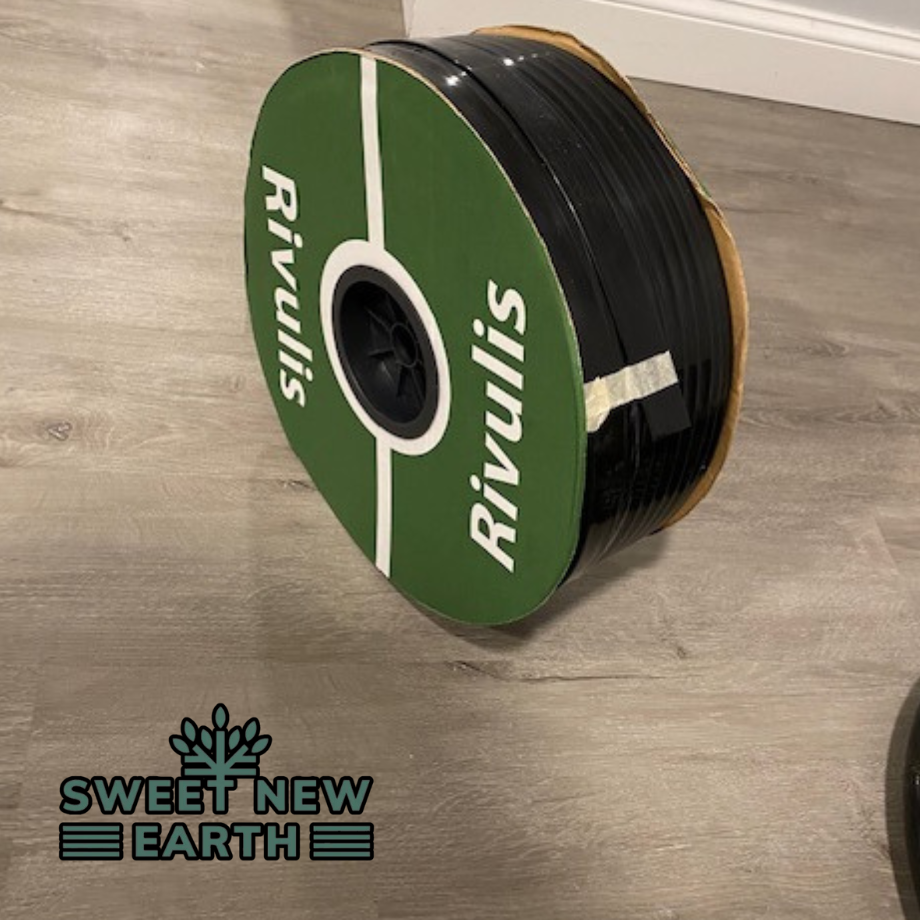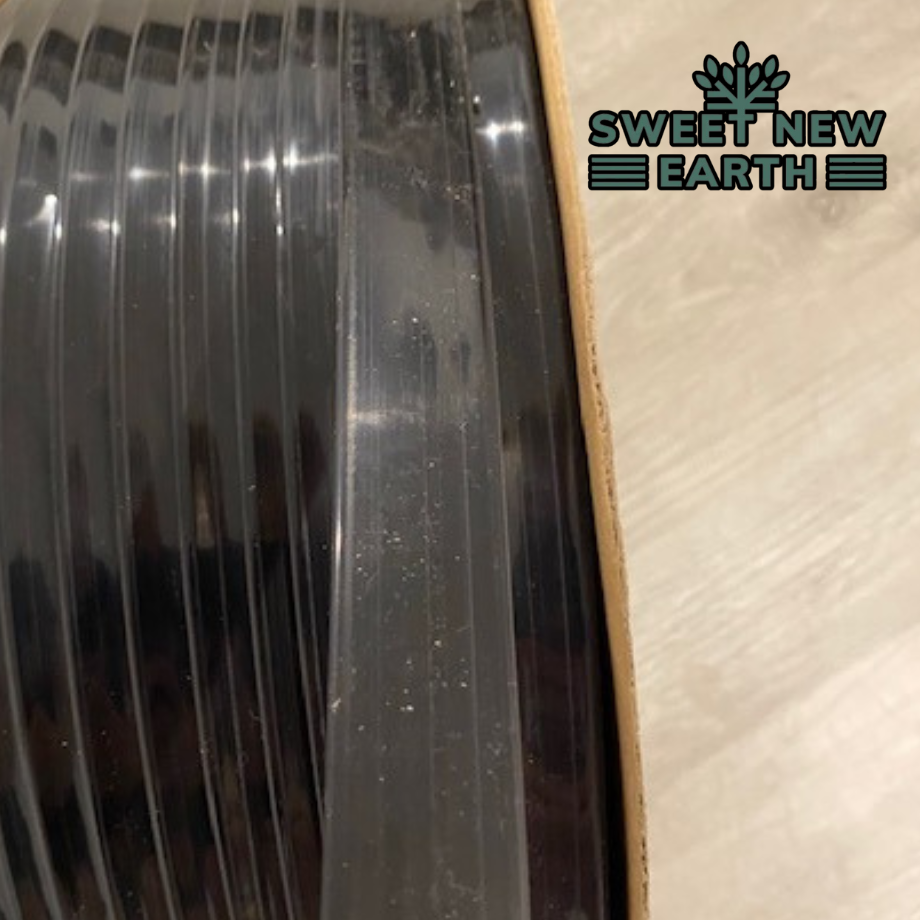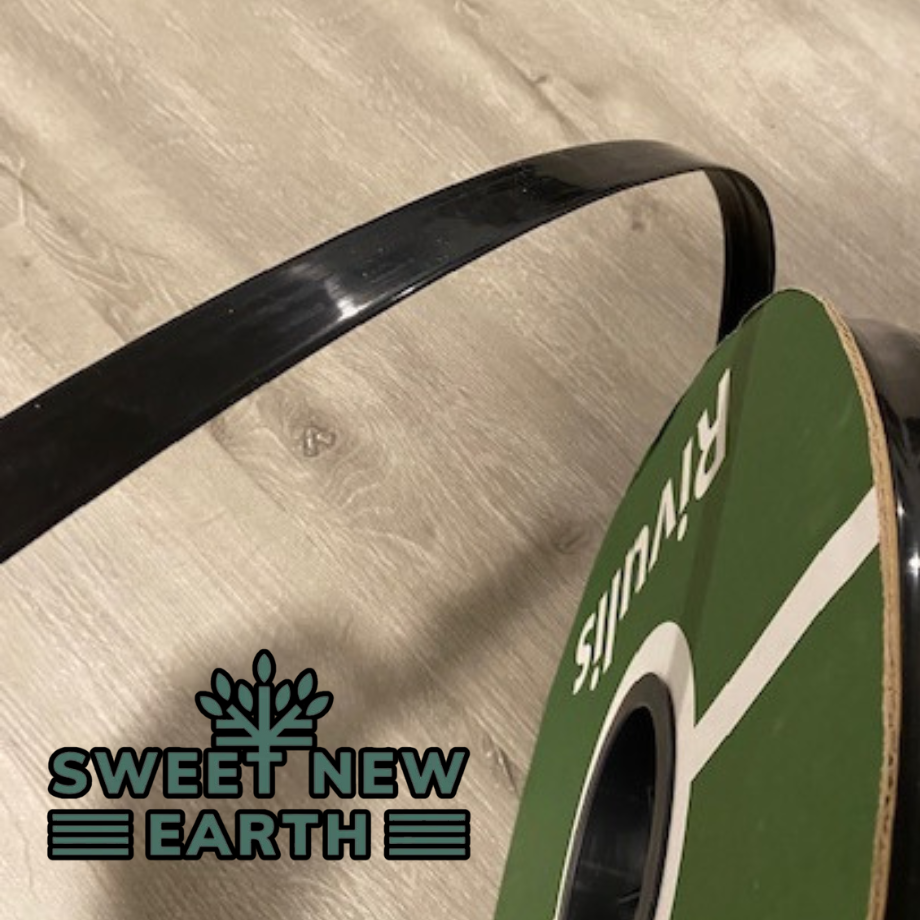What Is Drip Tape?

We test and review gardening and other outdoor products based on an independent, multi-point methodology. If you use or links to purchase something, we may earn a commission. Read our disclosures.
Does anyone actually know what drip tape is?
Just kidding, I do.
And I'm going to explain it to you.
This is another doozy, so get yourself a cup of coffee, buckle in, and let's get started.
Please note: I plan on answer this question form the perspective of a home gardener. If you are looking for commercial agriculture solutions, then you may want to look elsewhere.
What Is Drip Tape? Everything You Need To Know
Drip tape is a type of drip irrigation that is similar to the standard 'drip irrigation.' Typically, when someone refers to drip irrigation, they are actually referring to drip irrigation tubing.
It is almost identical. But there is actually a difference between drip line and drip tape.
This is totally semantics, but stay with me.
Drip Tape is a long, straight row of flat, thin-walled tubing with drip emitters evenly spaced along the entire length of the tape.
Like soaker hoses, it will fill up and expand when pressurized with water, but unlike soaker hoses (which emits water all along its line), drip tape will only deliver water through the evenly spaced drip emitters along the length of the line.
RELATED: Drip Tape vs Soaker Hoses

So let's recap. Overall, drip tape is best for:
- Long rows
- Straight rows
- Temporary applications
- Varied emitter spacing
- Lower flow rates
Drip tape is a seasonal product. Most of the time, it's used for straight-lined rows of crops. It doesn't really matter what you use to water with it, the drip tape will always be in straight lines. So you'll plant accordingly.
That means you'll plant your plants or crops right next to the evenly spaced emitters along the line. This ensures you are getting water directly to the root zone. This is vital for plant growth and healthier plants overall.
Features
Flow Rate: Drip tape is typically run at low flow rates. You can also shop drip tape for different emitter flow rates.
If you have thick, dense, sandy soil, you can run your drip tape at lower flow rate to give the soil time to absorb the water.
Most drip tape runs between 10 to 15 PSI so it's a good option for home gardeners. Not only that but with a drip tape irrigation system, you save water.
Just remember, you don't need too much pressure. If you need to, hook up a pressure regulator to the water source so you can maintain a low pressure.
Run Length: Drip tape is used for longer run lengths. It's used to support long, straight lines of crops. Drip tape was designed for longer rowed commercial gardening but found it's way into hobby gardening too.
Flexibility: Drip tape is not flexible when it's pressurized. It needs to be straight. If you have a garden with plants everywhere, or need line that can snake in and around your plants or flowers, drip tape is not the best option.
RELATED: Drip Tape vs Drip Line
Included in that is tree rings. You won't be able to make any ring or loop with drip tape - you have to lay your drip tape straight. So if you are trying to irrigate your trees, you'll need something else.
However, you can certainly lay drip tape in a raised bed, straight across the bed. If you have a smaller raised bed, you can cut the drip tape to a shorter length to fix the bed.
Throw an end cap on the end of the drip line and you are good to go.
Durability: Drip tape isn't as durable as other drip irrigation systems. Like I said above, it has extremely thin wall thickness.
However, it is still quite durable and can last for a few years. It's just a bit more susceptible to damage compared to drip tubing.

Emitter spacing: Drip tape comes with pre-installed emitters. You won't be poking holes along the line.
And the emitters will be evenly spaced along the line. Drip tape tends to have a lot of options when it comes to drip spacing:
- 4-inches
- 6-inches
- 8-inches
- 12-inches
- 24-inches
- 60 inches
12-inches is a good, all-purpose length for drip tape, however, you can go as low as 4-inches or as high as 60-inches. It just depends on your needs.
Cost: Drip tape is typically lower in cost compared to other drip tubing. Why? It is thinner. Thinner tubing means less material was used to make the line.
How To Install Drip Tape
If you need to know how to install drip tape, we have an extensive guide coming out soon. But for now, we have a smaller, how-to-lay drip tape guide that will cover the basics.
There is a bit that goes into setting up supply lines, so it would be a great idea to read that guide.
Now You Know All About Drip Tape

Now that you've read this article, you are basically a professional on drip tape. Honestly, there isn't that much to know.
It's a simple and effective drip irrigation system. Between drip tape and drip line, there is almost never a situation you can't handle.
Whether you chose drip tape irrigation or another drip irrigation system, it doesn't really matter.
Any irrigation system that is reasonably durable, and can deliver water directly to the root zone of your plants will be an effective way of water your garden.
FAQs
Before you go...
Now that you know all about drip tape, it's time to get out there and lay some drip tape. Be sure to check out our guide for building your very own drip irrigation system here.
Related Articles:

Carl Anderson
Carl Anderson is an avid outdoorsman with a keen interest in writing about and reviewing tools. He has over 20 years of writing experience and the only time he isn't feverishly typing away at his computer is when he's outside in nature working on his projects. You can learn more about him here.
Join our community!
Join to receive guides, insights, and the latest gardening deals!
